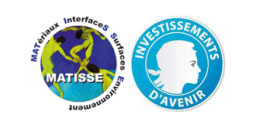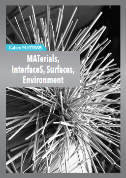Toward a microfluidic model to understand pathological renal microcalcifications

Axe 1 - Biomineralisation
Post-doctorat de Guillaume Laffite
Poste actuel : ---
Laboratoires co-porteurs
- Chimie de la Matière Condensée de Paris
Porteur de projet : Dominique Bazin
Co-encadrants : Laure Bonhomme, Christian Bonhomme - Physicochimie des Electrolytes et Nanosystèmes interfaciaux (ancien PECSA)
Co-encadrant : Ali Abou-Hassan - Hôpital Thenon
Co-encadrant : Emmanuel Letavernier, Michel Daudon, jean-Philippe Haymann
Présentation
Recent epidemiological studies have suggested an increased frequency of kidney stone disease in all age groups during the last decades affecting about up to 5% of the industrialized population. Microfluidic technology offers valuable potentialities to understand more deeply the pathogenesis of calcium oxalate crystals precipitation. Inside a microchannel, the conditions of mixing are representative of the biological fluids flows and exchanges inside the nephron microtubules (laminar flux).
In partnership with nephrologists from Tenon’s hospital, we have developed a microfluidic device dedicated to the synthesis of CaOx crystals. On a biochemical point of view, role of biological fluids, growth inhibitors (citrate ions), thermal effect and pH have been investigated. We will also investigate the influence of calcium-phosphate spherules present on organic matrix (collagen I) as an initiator site for calcium-oxalate crystals growth in order to mimic ectopic microcalcifications (Randall’s Plaques).
Résultats
Based on the two-laminar flow technic, the team used an elastomeric based microfluidic technology devoted to the precipitation of calcium-oxalate crystals. The device is composed of a “Y-shaped” microchannel in which both calcium and oxalate ions are injected. We demonstrate the potentialities of the method by studying the morphology (FE-SEM) and the chemistry (μATR-FTIR, μDRX) of the crystallites obtained on the microchannel surface in different concentration ratio conditions (case of hypercalciuria).
Publication
- G. Laffite, C. Leroy, C. Bonhomme, Laure Bonhomme-Coury, Letavernier Emmanuel et al.
Calcium oxalate precipitation by diffusion using laminar microfluidics: toward a biomimetic model of pathological microcalcifications
Lab on a Chip, Royal Society of Chemistry, 2016, 16 (7), pp.1157-1160.
Doi : 10.1039/C6LC00197A
Ref Hal : hal-01288757v1
Egalement dans la rubrique
- Anomalie strontique du plancton calcaire : approche biogéochimique et minéralogique
- Electroactivity in a deep crater lake : microbial vs. mineralogical contributions
- Formation des racines calcifiées (rhizolithes) dans les sédiments terrestres
- Quels complexes organo-minéraux assurent la stabilisation pluri-décennale du carbone dans les sols ?
- Reaction networks and aqueous stability of RNA elementary bricks in realistic prebiotic conditions
MATISSE en chiffres
- 4 disciplines : Chimie, Physique, Sciences de la Terre, Patrimoine
- 400 permanents
Contact
Direction
Florence Babonneau
Administration
Communication
Emmanuel Sautjeau



